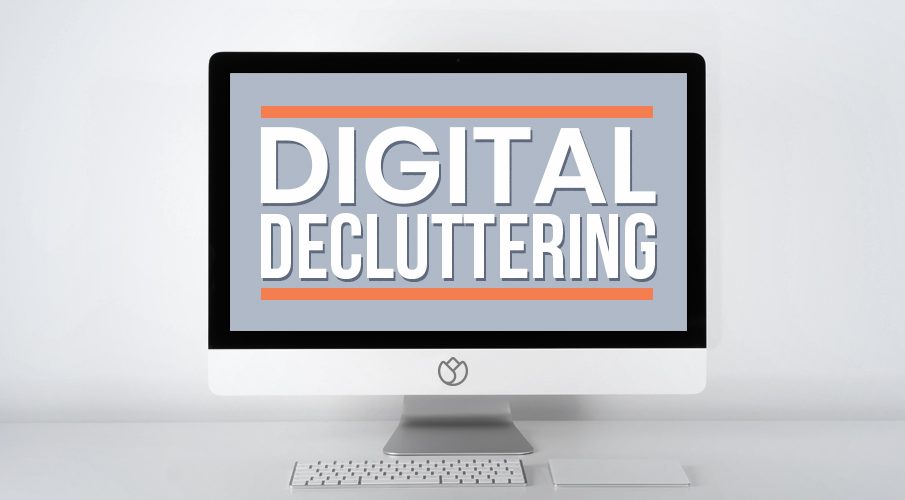Digital Declutter & Minimization Guide

Physical clutter in our homes is usually easy to spot. From clothes piled in a corner to an overflowing closet, this disorganization—though sometimes ignored—never truly goes unnoticed. In contrast, digital clutter often goes unseen and neglected until it causes significant device slowdown or results in missed important emails.
Just as with physical clutter, it is beneficial for both our mental well-being and the efficiency of our devices to engage in periodic “digital decluttering.” Here, we will outline what digital decluttering involves and provide tips for maintaining better digital organization.
So, what is digital clutter? Simply put, it is the disorganization of electronic devices. Whether it’s a smartphone, computer, or tablet, this clutter can slow down both the device and the user due to the challenge of navigating excess information. Digital clutter can take many forms, such as a packed email inbox, a cluttered desktop, or unused apps. Research indicates that managing digital clutter can cause stress levels comparable to those experienced with physical clutter.
Fortunately, there are several effective strategies for digital decluttering. A useful starting point is to utilize tools or services that facilitate the process. For example, backing up important files to a cloud storage service allows for the deletion of data from the device without losing valuable information. Additionally, hardware solutions like external hard drives or flash drives can store old photos and documents, relieving the digital load on the device.
Other approaches include deleting or clearing unnecessary data. Web browsers offer options like “Clear Browsing Data” and “Clear History” to eliminate extraneous information. Regularly deleting the browser’s cache and cookies is also beneficial. Uninstalling unused apps, including preloaded ones that came with the device, can significantly reduce digital clutter and enhance device performance.
Keeping software and apps updated is another critical task, albeit sometimes inconvenient. Updates are essential for security, addressing new cyber threats. Outdated apps can also cause device sluggishness. Regularly checking for updates in app stores and system settings, or accepting update prompts, helps prevent potential slowdowns.
Lastly, email inboxes are a major source of digital clutter. An overloaded inbox can lead to various problems. To quickly clear an inbox, select all messages and use the “Archive” function. Organizing incoming emails with folders or labels can help manage them more effectively. Unsubscribing from unnecessary services reduces the number of incoming emails, maintaining a clutter-free inbox.
To learn some additional tips on digital decluttering, be sure to review the resource included alongside this post.
Digital Declutter & Minimization Guide, was provided by Great Plains Communications, an organization offering a wide suite of managed ethernet services










